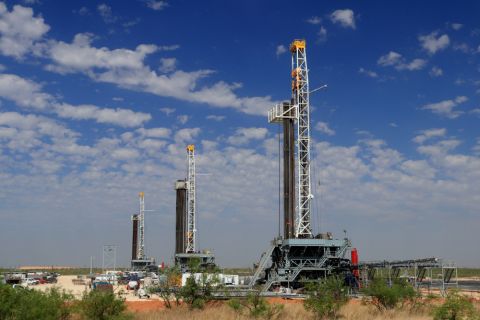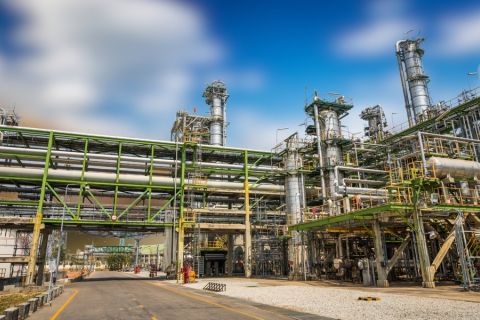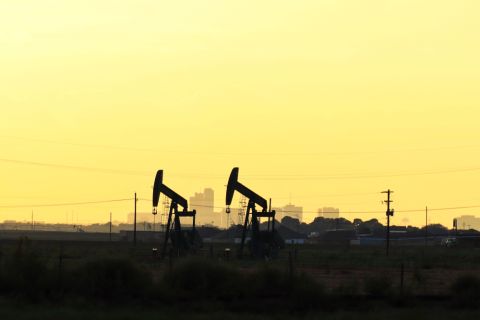
Will daily U.S. oil production still increase this year, although by a much smaller percentage than last year or in 2013, or will it actually reverse and start to decline? Whichever way it goes, you have to be prepared to accept it, deal with it accordingly and move forward.
Perhaps we can learn how to manage by looking at golf, probably the game that requires the most patience and calm demeanor of any game that exists—other than chess.
At Oil and Gas Investor’s annual Energy Capital Conference, held at Barton Creek in Austin last month, we enjoyed an entertaining and frank after-dinner speech from golf pro and TV commentator David Feherty. The very next morning he flew to Augusta, Georgia, for the Masters Tournament.
Among his many funny anecdotes about life on the PGA tour was this nugget of sage advice, good for your golf game and for life: When you face making a crucial putt, you know it can only go one of two ways—you will make it or you won’t. That’s it. So you have to remain calm and be prepared to fully accept the result and the responsibility for it, either way the ball goes, Feherty said. That’s what the best golfers do. They cannot overthink it or second-guess it. It is what it is and it cannot be done over.
This seems to be great advice for life in general, and especially for the uncertainty we face this year in the oil and gas industry. Executives in the corner offices have done about all they can, from cutting budgets to re-allocating capital back to the less risky core, to shoring up the balance sheet, to driving greater efficiency in the field. The focus has changed from production growth to returns.
Meanwhile, each of us is hungry for a sign that the upturn is finally coming. There is some good news starting to percolate through the tea leaves: this month, oil production from the fastest-growing U.S. shale plays is set to fall some 45,000 bbl/d to 4.98 million bbl/d, from April levels, according to a forecast from the Energy Information Administration. This is significant, despite the small number, since it marks the first monthly decline in over four years, the EIA said.
The ever-so-slight decline suggests shale production may finally be reversing from boom to slowdown, therefore signaling the turning point oil-price watchers have been waiting for.
Production from the Bakken Shale was projected to fall by 23,000 bbl/d to 1.3 million a day. Eagle Ford output was forecast to fall 33,000 bbl/d to 1.69 million a day, the largest monthly drop since EIA began tracking the data in 2007. However, production from the Permian was forecast to rise by 11,000 bbl/d to 1.99 million bbl/d, albeit the smallest monthly increase since November 2013, according to the EIA’s most recent drilling productivity report.
Drilling efficiencies and enhanced completions indicate production from new wells has accelerated, so EIA data are showing mixed messages. We are not out of the woods yet, although we are beginning to see the impact of revised capex plans in that well permitting activity is slowing, said Morgan Stanley analyst Drew Venker in a recent report.
“Capex cuts were a harbinger of significant permitting slowdowns and permitting slowdowns are a harbinger of slowing activity and U.S. production. During 1Q15, oil rich plays, Eagle Ford (-43% quarter/quarter), Permian (-30% q/q) and Bakken (-27% q/q), led the decline in U.S. permitting activity,” he said.
But at the same time, Venker noted these factors will offset the permit declines: “…efficiency gains (in both drilling and completion); increased drilled and uncompleted well inventory; improving well performance (higher IPs and EURs); deflationary costs (30%-40% decline in OFS cost); and inventory high-grading…”
An oil-price recovery bull on Wall Street, Bob Brackett of Bernstein Research, looked at 26 E&Ps that have given explicit production guidance for this year. They range in size from Apache Corp. (which reported fourth-quarter 2014 output of 304,000 boe/d), to Pioneer Natural Resources at 101,000, on down to Southwestern Energy Co. with just 1,000 boe/d (being mostly a gas-weighted producer). Despite capex cuts, these 26 companies guided to 2015 production of 3.06 million boe/d, a small increase over fourth-quarter 2014 output of 3.02 million boe/d. Production growth has slowed a lot since the heady days of 2013-2014, when the 26 companies grew output 13%.
One key question is, what is the decline of each shale play, balanced against changes in oil demand? And, will the government approve crude oil exports? Throughout this issue you can read several different interpretations and forecasts of what may lie ahead, especially in the Newswell section.
We hope to see you at DUG Permian in Fort Worth, May 19-21, where we will all get a much clearer picture of where activity and cost trends are headed in that spectacular basin, a cornerstone of U.S. oil production. Go to DugPermian.com for the agenda and to register.
Recommended Reading
UK’s Union Jack Oil to Expand into the Permian
2024-01-29 - In addition to its three mineral royalty acquisitions in the Permian, Union Jack Oil is also looking to expand into Oklahoma via joint ventures with Reach Oil & Gas Inc.
Diamondback Energy to Acquire Permian’s Endeavor for $26B
2024-02-11 - Diamondback Energy will acquire Endeavor Energy in a cash-and-stock agreement that will create a Permian juggernaut with a combined value of more than $52 billion in a merger of near equals.
ConocoPhillips CEO Ryan Lance: Upstream M&A Wave ‘Not Done’ Yet
2024-03-19 - Dealmaking in the upstream oil and gas industry totaled $234 billion in 2023. The trend shows no signs of slowing, ConocoPhillips CEO Ryan Lance said at the CERAWeek by S&P Global conference.
Talos Energy Sells CCS Business to TotalEnergies
2024-03-18 - TotalEnergies’ acquisition targets Talos Energy’s Bayou Bend project, and the French company plans to sell off the remainder of Talos’ carbon capture and sequestration portfolio in Texas and Louisiana.
Dallas Fed Energy Survey: Permian Basin Breakeven Costs Moving Up
2024-03-28 - Breakeven costs in America’s hottest oil play continue to rise, but crude producers are still making money, according to the first-quarter Dallas Fed Energy Survey. The situation is more dire for natural gas producers.





